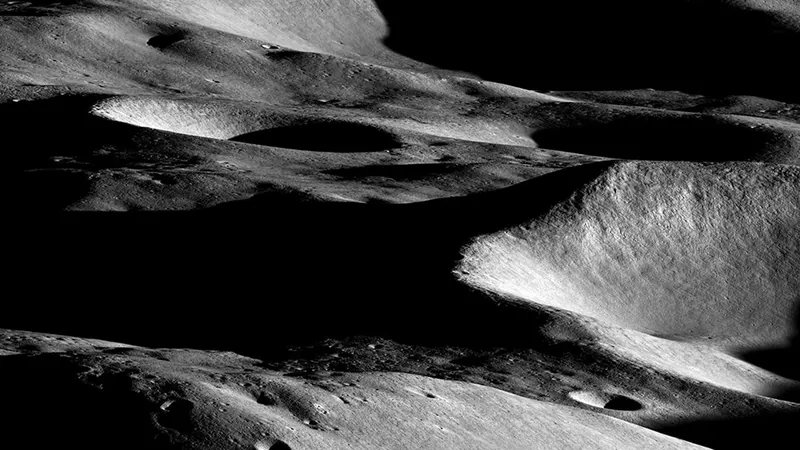
Moonquakes: An Unexpected Threat to Artemis Missions? Here’s What You Need to Know!
2024-09-21
Moonquakes: An Unexpected Threat to Artemis Missions? Here’s What You Need to Know!
Recent research has unveiled alarming insights regarding the potential impact of moonquakes on future Artemis missions set to establish a human presence at the moon's south pole. The study highlights that specific landing zones, chosen for their promising access to resources like water ice, are more vulnerable to quakes and possible landslides than previously understood.
Published in the Planetary Science Journal, this groundbreaking study draws on historical data collected from seismometers deployed during the Apollo missions over fifty years ago. The authors reveal a network of active faults in the south polar region that could trigger significant seismic events, posing substantial risks for robotic landers and human-crewed Artemis expeditions.
Designing for the Unique Challenges of the Moon
The implications of this research are monumental for architectural planning on the lunar surface. Lunar design expert Nerma Caluk from Skidmore, Owings & Merrill emphasizes that existing terrestrial building codes do not apply to moon construction, making the development of lunar-specific standards essential. A committee within the American Society of Civil Engineering is working on the first-ever lunar building guidelines, focusing heavily on seismic considerations.
Caluk explains that the moon’s seismic environment presents unique challenges. The duration of moonquakes is notably longer than terrestrial earthquakes, with seismic energy lingering for half an hour to several hours. Alarmingly, while moonquakes may have lower magnitudes than large earthquakes, their proximity to sensitive infrastructure could spell disaster, leading to fatigue-induced cracks in lunar habitats and operational facilities.
Urgency for Increased Data Collection
There's a pressing need for more comprehensive data on lunar seismic activity. Current understanding is based on seismic recordings from Apollo instruments located near the moon's equator, leaving a significant knowledge gap regarding the south pole's geological and tectonic characteristics. To address this, new initiatives are calling for the deployment of advanced seismometers as part of NASA’s Commercial Lunar Payload Services missions.
Continued advancements in seismic research are critical as humanity seeks to establish a permanent foothold on the moon. The growing recognition of the dangers posed by moonquakes underscores the urgent need for meticulous site selection and innovative construction techniques.
The Future of Lunar Infrastructure: Innovation and Adaptation
Experts believe that adaptive seismic systems, which have evolved significantly in recent years, must be tailored specifically for lunar conditions. Sam Ximenes, an influential space architect, highlights that addressing the effects of moonquakes will be vital for ensuring the stability and durability of lunar structures.
Moreover, companies like Honeybee Robotics are leading the charge in developing new construction technologies such as the LUNARSABER, a proposed tall tower structure designed to withstand the unique seismic challenges of the moon's surface. However, engineers must carefully evaluate both material properties and site terrain to ensure that these innovative designs can function safely in the harsh lunar environment.
Conclusion: A Call for Vigilance and Imagination
As the Artemis program gears up for its ambitious lunar endeavors, the findings on moonquakes serve as a critical reminder of the unpredictability of extraterrestrial environments. Only through robust planning, innovative engineering, and an open acknowledgment of these geological threats can we hope to not only survive but thrive on the lunar frontier. The moon's allure is undeniable, but the journey ahead requires a blend of creativity, caution, and, above all, courage.
The path to becoming a multi-planetary species hinges on addressing these unforeseen hazards—are we ready to take on the challenge? Stay tuned as we follow the latest developments in lunar exploration!



 Brasil (PT)
Brasil (PT)
 Canada (EN)
Canada (EN)
 Chile (ES)
Chile (ES)
 España (ES)
España (ES)
 France (FR)
France (FR)
 Hong Kong (EN)
Hong Kong (EN)
 Italia (IT)
Italia (IT)
 日本 (JA)
日本 (JA)
 Magyarország (HU)
Magyarország (HU)
 Norge (NO)
Norge (NO)
 Polska (PL)
Polska (PL)
 Schweiz (DE)
Schweiz (DE)
 Singapore (EN)
Singapore (EN)
 Sverige (SV)
Sverige (SV)
 Suomi (FI)
Suomi (FI)
 Türkiye (TR)
Türkiye (TR)